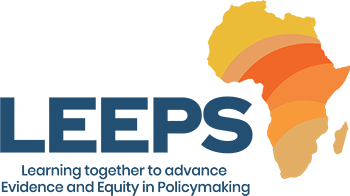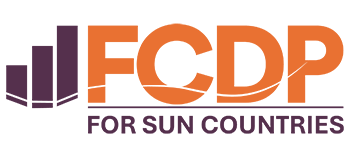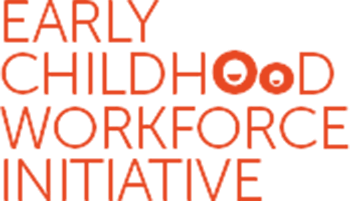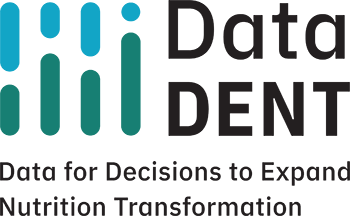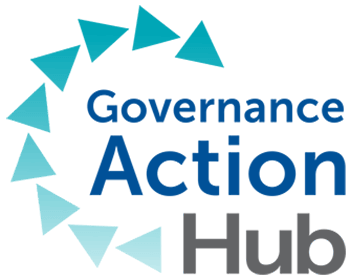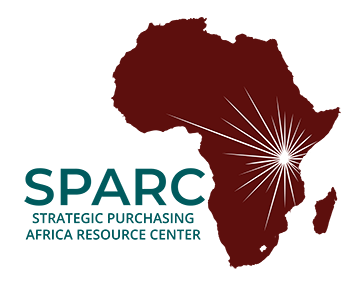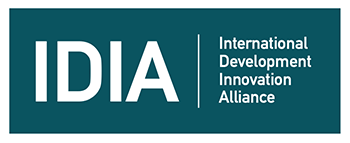Calling all sustainable financing experts! Let’s learn from each other to find a common language and framework
[Editor’s Note: This is the first post from members of the R4D Sustainable Financing Community of Practice — a cross-cutting team that aims to provide an internal forum to share information about sustainable financing at R4D and collaboratively grow our technical expertise and approaches in this space, while identifying synergies across and drawing lessons from R4D’s work in health, education and nutrition that can inform our and others’ work. Future posts will dig deeper into the “how to” of sustainable financing for each of the objectives listed below.]
When it comes to advancing sustainable progress in health, education and nutrition, every dollar counts. That’s because these social sectors are often underfunded, hard to budget for and even harder to measure progress in.
Understanding how to effectively advocate and negotiate for investments in health, education and nutrition is crucial for making sure that programs and populations consistently get the resources they need. But creating long-lasting impact goes beyond how much money comes in the door. Policymakers, program managers and front line workers must know how to prioritize limited resources, they must understand how to distribute resources efficiently, effectively and equitably — and they must know how to measure the impact of those investments.
In short: it’s complicated. And although some issues are sector specific, many sustainable financing challenges are the same regardless of the sector. Health, education and nutrition would benefit from finding a common way of thinking across sectors — so that governments and other practitioners (including us!) can speak coherently to Ministries of Finance and other crosscutting ministry partners, leverage learnings about what has or hasn’t worked in applying sustainable financing interventions within sectors, and begin to tackle sustainable financing challenges with a multisectoral lens — hopefully creating enduring change in the process.
This blog post is an attempt to get that crosscutting conversation started. Here, we present a common framework for sustainable financing as well as some key takeaways from R4D’s experience working with change agents around the world.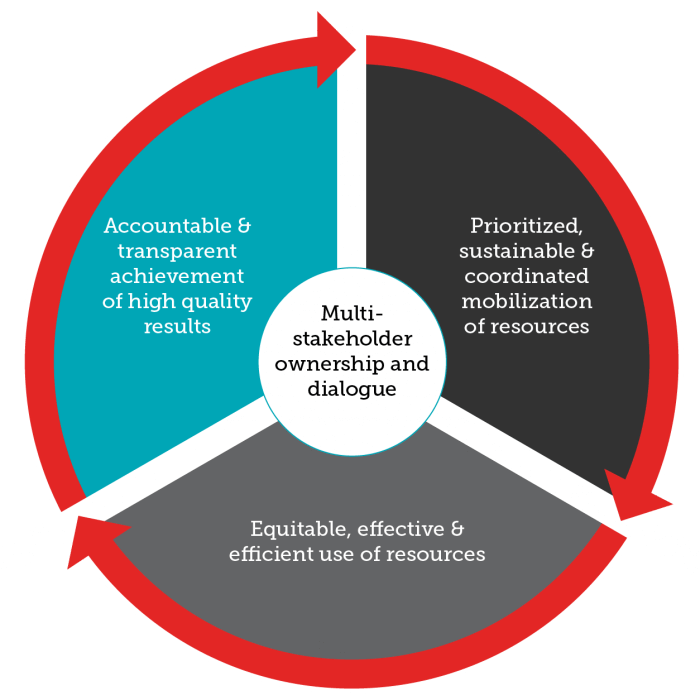

![]()
Since governments and public financial management systems play an indispensable role in the sustainable financing of most social sector programs, our framework is linked to common objectives that can be shared across sectors:
- To ensure prioritized, sustainable and coordinated mobilization of resources
- To make equitable, effective and efficient use of resources
- To transparently account for whether spending achieves high-quality results
A final fourth and core objective focuses on collective action toward achieving the other objectives. This can only be attained by nurturing open dialogue between a complex set of actors.
Based on our and others’ experiences working with country change agents, R4D has developed a common way of thinking about these objectives and key takeaways for approaching implementation around each one.
Prioritized, sustainable and coordinated mobilization of resources
Getting the right level of resources mobilized for the right things (and at the right time) can be a challenge. Budget formulation — guided by the public financial management system and underlying budget cycle — needs to be mindful of the macrofiscal realities of a country, with timely allocation of resources occurring according to the clearly articulated plans and priorities of the various sectors that they fund.
At the core of this is an understanding that domestic financing — in particular, publicly raised revenue that flows through government systems — is the backbone of sustainable financing.
While many countries rely on a mix of revenue to fund their social sectors (for instance, from donors or the private sector), these fund flows do not come with the same social contract as government revenue. External funding can be transitioned or retracted, and hence sustainability and equity cannot be guaranteed. Similarly, when services are too dependent on user fees, this also jeopardizes equity and financial protection, and ultimately leads to lower service utilization and worse outcomes.
Equitable, effective and efficient use of resources
Efficiency isn’t just about cutting costs, it’s about doing more with existing money through stronger systems, like budget processes, or specific interventions that magnify value and improve quality. This means making sure that money already allocated to sectors is being stretched as far as it can, by doing things like buying items that are cheaper or more effective, or spending on a different mix of interventions.
For instance, interventions that have a higher return on investment can include those focused on fundamentals, such as early childhood development, childhood nutrition and primary health care.
Investments in high-impact, cross-cutting interventions can benefit other sectors and make societies healthier, stronger and more productive in the long run. They can also reduce the potential for future costs and improve economic outputs.
Ensuring that budget structures and rules give decision-makers the flexibility and autonomy to make funding decisions around these interventions and how they are delivered — like contracting with the private sector — is also key, as is ensuring that their expenditure is aligned to achievable, prioritized outcomes (healthy, educated people) instead of inputs (books, medicines, buildings and salaries).
Accountable and transparent achievement of high-quality results
Ensuring that investments can be properly tracked, monitored and attributed is crucial to demonstrating that results are met.
Investing in global and country-owned mechanisms for expenditure tracking can have positive spillover effects by enhancing regular demand for information and improving accountability around what is achieved.
Governments and other implementers need to make sure that both the right financial and outcome data are generated, and that data are getting into the hands of decision-makers and advocates who need them most. Data generation and use become all the more important as countries increasingly implement outcomes-oriented contracts and other results-based financing arrangements for social sector service delivery.
Civil society and other non-state actors play a critical role in ensuring accountability around commitments to the population. Building domestic ownership of fund flows also requires building the communications and advocacy capacity of local change agents, including civil society, to pressure government and other actors to fund local priorities and needs.
Sustainable financing requires dialogue between a complex set of actors
At its core, financing is deeply political. To be sustainable, it requires concerted collaboration, dialogue and consensus building. Policymakers and other leaders within a given sector must be able to rally a broad set of actors such as the private sector, associations, providers, workers and everyday citizens. They must also be able to effectively advocate for priorities with their counterparts across government, including Ministries of Finance, home affairs and others, while understanding the motivations and challenges their counterparts face. Finding meaningful ways to engage these actors together on sustainable financing encourages coherence, understanding and cross-fertilization between sectors, and hopefully generates better outcomes for all.
We don’t have all the answers, and so we hope these takeaways from R4D’s work in sustainable financing can help to start a useful conversation about how to more holistically tackle the sustainability challenge. We invite broad comments, critiques and additions to our thinking — we look forward to hearing from you!




